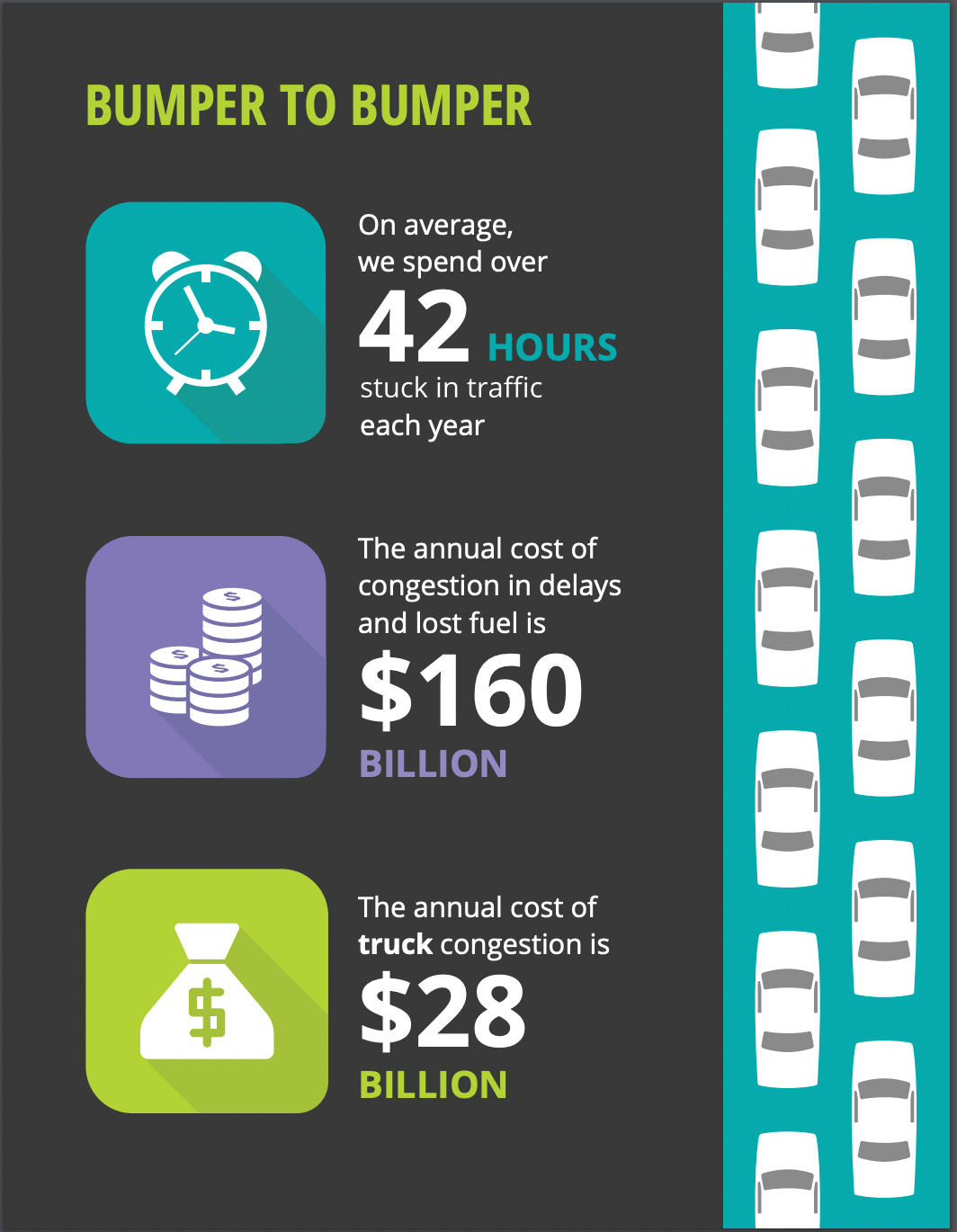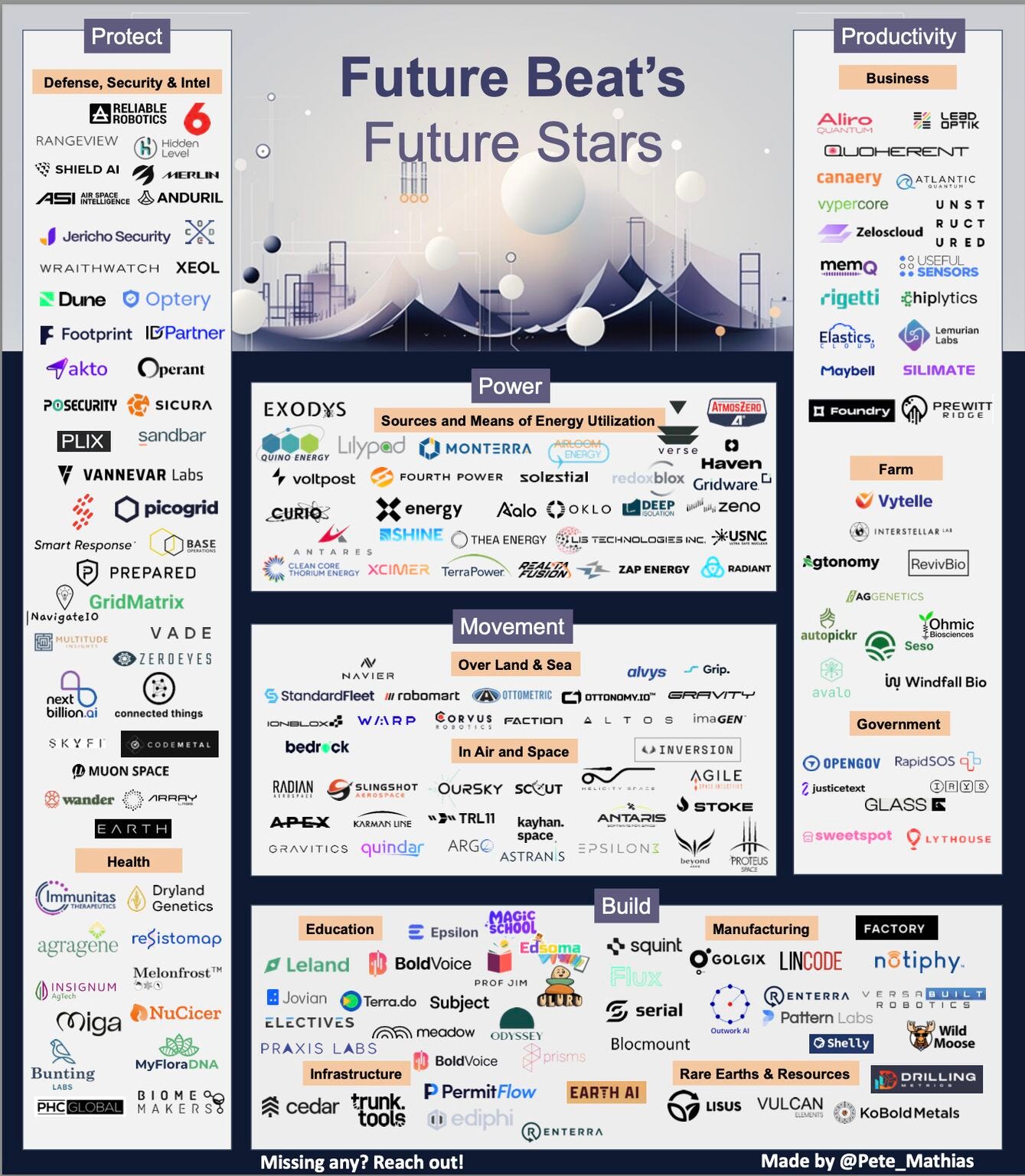Half the world heads to the polls in 2024. A reminder though: while elections shape years, innovations shape centuries. What innovations?!
… 🥁 drum roll please,
Pete
PS: As always, awesome jobs at awesome companies at the bottom!
More than heads of state, founders of new-era companies hold civilization’s reigns. Good or bad, we are in the hands of pioneering builders not bully-pulpits.
With that in mind, where is our world headed? It is my view that innovations in five critical areas— core “country-level” competencies— guide our future. What are those areas? Productivity, Power, Protection, Building, and Movement.
Productivity: Unleashing Growth
The secret sauce of growth has always been to work smarter, not harder. Since 1947, labor productivity has been the turbocharger of the U.S. economy, enabling a ninefold surge in output with minimal extra hours (via Bureau of Labor Statistics):
However, a dramatic reversal in productivity growth since 2005 poses a challenge not just for the United States but for major developed economies worldwide. Consider the European Union, for example. Labor productivity growth has been losing momentum. Look here:
My view: the future belongs to companies innovating in Artificial Intelligence, Quantum Computing, and Semiconductors/Chips, promising to reverse this productivity fiasco.
Power: Energizing our World
Energy is the backbone of any country's development. With electricity demand projected to double by 2030, the global energy system is on the brink of a transformation, emphasizing solar, wind, electric cars, and heat pumps. Yet, the intermittent nature of these "clean" energy sources necessitates a reevaluation of baseload power solutions, including a nuanced embrace of nuclear energy, despite its complicated past with environmentalism. Here is how energy will “2x” in consumption in the next generation:
My view: the future belongs to technologists capable of diversifying and intensifying capabilities to produce clean, abundant energy— but only those that avoid pseudo-green “marketing postures” (e.g. green-washing) and instead are heads-down, quiet, and authentic in their delivery of new-era, clean energy (e.g. “green hushing”).
Protect: Safeguarding the Future
From Red Sea to Red Team, mitigating threats is an everlasting, escalating challenge. Consider in the digital realm: by 2025, cybercrime may cost the world $10.5 trillion — that is roughly equivalent to the combined GDP of Japan, Germany, and India, three of the world's largest economies. Staggering.
From cybercrime to non-human threats like pandemics and heart disease, the challenge of mitigating threats, both digital and physical, continues to escalate. Amidst geopolitical shifts and the need for innovation in physical security, there's a pressing call for unity and novel protection strategies against both bad actors and natural threats. This is increasingly complex in the pivot to a “multi-polar” world, where there is rise in global influence of new powers:
My view: the future belongs to companies that prioritize peace — creating technologies oriented towards resolution over conflict. These technologies— software and hardware and a blend of both— respond to the changing theater and face of conflict.
Movement: Land, Sea and Air/Space
By 2045, the population of the United States will grow from ~330 million to 390 million. That is like adding today’s populations of New York, Texas, and Florida to our national population (DOT). Imagine what that means for U.S. transportation infrastructure— how we move, across land, sea, air and space.
Here are already startling facts about congestion today:
From self-driving cars and drones to electric boats and space buses, innovation is fueling a future where transportation leaps beyond roads to the stars, making movement cleaner, smarter, and boundless.
My view: the future belongs to companies that alleviate stress with new and novel transportation means, modes, and enablers.
Building: Constructing the Future
The continuous need for building, from ancient Roman concrete methods to modern BIM technologies, emphasizes the need for developing both hard and soft infrastructure.
There are so many challenges for building— not just in hard infrastructure (e.g. housing) but in soft infrastructure, too (e.g. education).
For example, addressing the global affordable housing crisis necessitates innovative solutions and effective collaboration, as rising land and home costs outpace the creation of accessible living spaces:
My view: the future belongs to companies that innovate in hard and soft infrastructure— and take a broad-based, creative approach to what “movement” across land, sea, air and space requires.
Illustrative Companies
Here are just a few companies shaping that future. I call these companies “Future Stars”:
Conclusion
As the world heads towards pivotal elections in 2024, it's clear that the true architects of our future lie not within the political arenas but amongst the innovators and pioneers focusing on key areas of productivity, power, protection, mobility, and construction. These areas, fundamental to the advancement and sustainability of our civilization, will dictate the direction in which we progress, underscoring the importance of innovative solutions to the challenges we face today and tomorrow.
Jobs
“As What You Can Do” — JFK
Here are the LinkedIns to 30+ companies where you should check out job openings. If you see one you like, message me back and I’ll see if I can help!
Airspace Intelligence: AI-enabled analytics for airlines
Anduril: AI-based defense solutions
Beyond Aero: Hydrogen-powered aircraft
Merlin Labs: Autonomous flight systems
Rangeview: Aerospace parts services
Reliable Robotics: Automatic flight control
Shield AI: AI fighter jet pilot
Akto: API security platform
Dune Security: Novel cybersecurity technology
Footprint: Identity verification solutions
IDPartner: Digital identity verification
Jericho Security: AI cybersecurity training
Operant: Cloud application security
Optery: Data privacy solutions
P0 Security: Cloud security platform
Radical Semiconductor: Hardware security systems
Sandbar: Financial transaction monitoring
Sicura: Cybersecurity training solutions
Wraithwatch: AI cybersecurity platform
Xeol: Code security solutions
Agragene: Genetically modified crops
Biome Makers: Soil microbiome analysis
Bunting Labs: Geocoding and routing API
Dryland Genetics: Genetic breeding for plants
Immunitas Therapeutics: Genomic-based cancer treatment
Insignum AgTech: Genetic modification for crops
Melonfrost: AI trait optimization for farming
MyFloraDNA: Agricultural genotyping tools
Resistomap: Antibiotic monitoring services
The Public Health: Biorisk management platform
GridMatrix: Traffic monitoring and analytics











